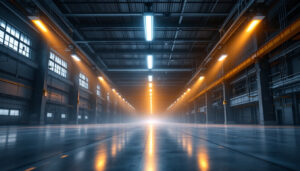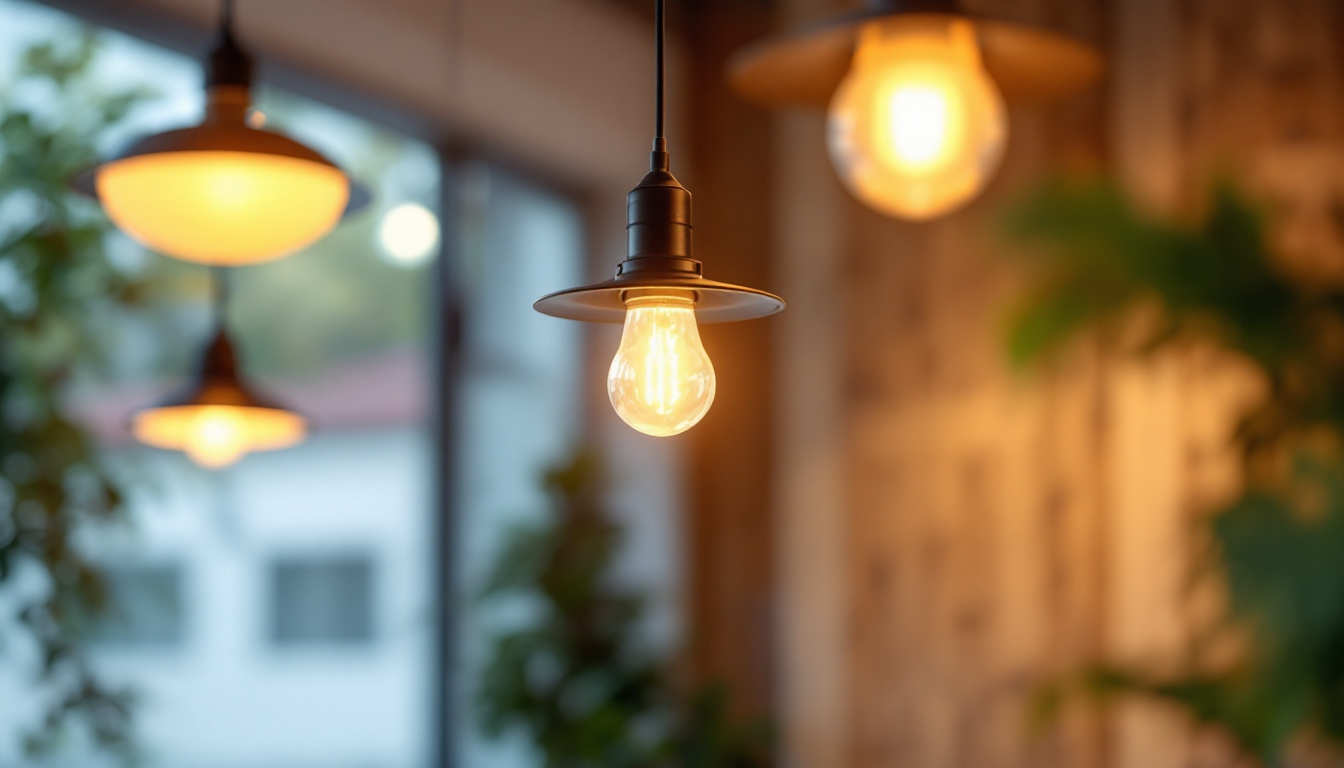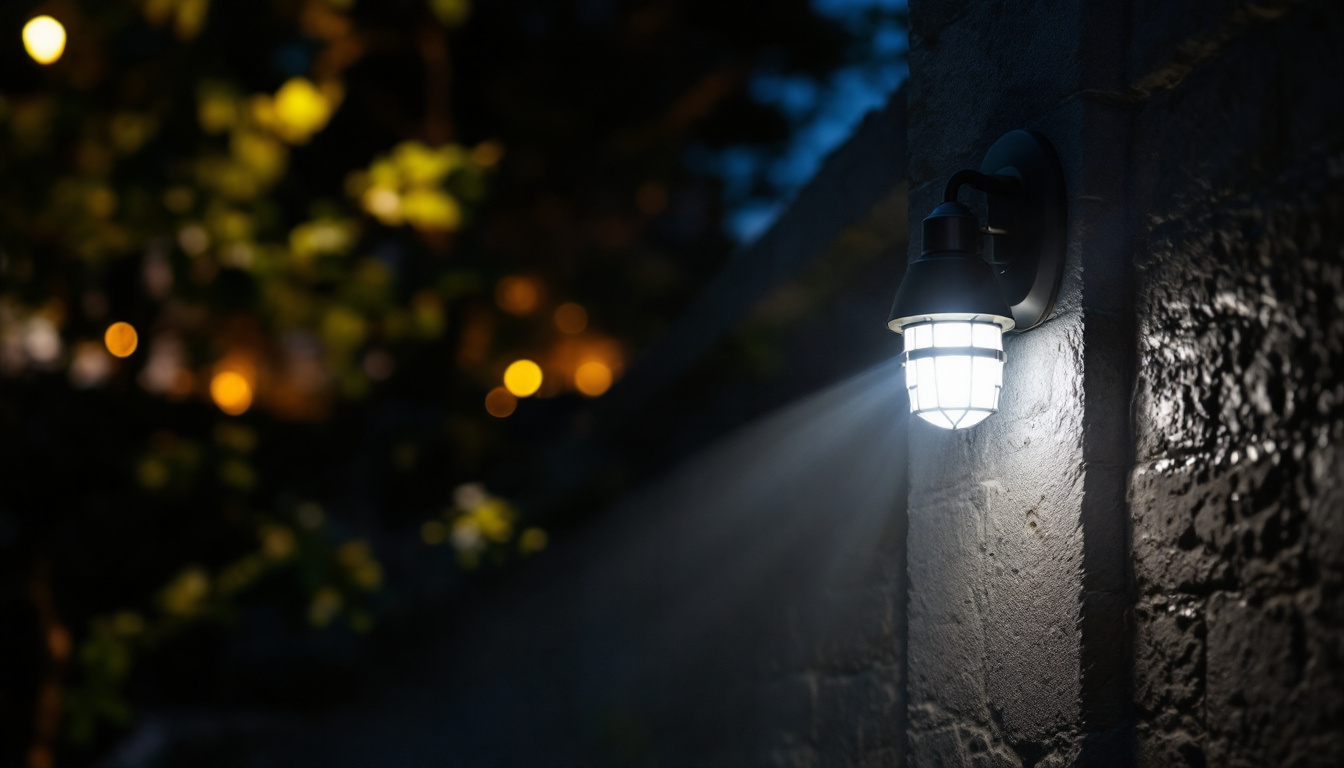

In the ever-evolving world of lighting, contractors face a critical choice between LED and fluorescent technologies. This decision not only affects the quality of light provided to clients but also impacts profitability and sustainability. Understanding the differences between these two lighting options is essential for contractors looking to enhance their services and boost their bottom line.
Light Emitting Diodes (LEDs) are semiconductor devices that emit light when an electric current passes through them. They are known for their energy efficiency, longevity, and low heat output. Unlike traditional light sources, LEDs do not rely on gas or filaments, making them more durable and less prone to failure.
One of the standout features of LED technology is its versatility. LEDs come in various colors and can be easily dimmed or controlled, allowing for tailored lighting solutions that meet specific customer needs. This adaptability is a significant advantage for contractors who aim to provide customized lighting designs. Furthermore, the compact size of LEDs enables them to be integrated into a wide range of applications, from intricate architectural lighting to simple home fixtures, enhancing both functionality and aesthetics.
Additionally, the environmental impact of LEDs is considerably lower than that of traditional lighting options. With no hazardous materials like mercury, which is found in fluorescent bulbs, LEDs are easier to dispose of and recycle. This eco-friendliness aligns with the growing trend towards sustainable building practices, making LEDs an attractive choice for environmentally conscious consumers and businesses alike.
fluorescent lights operate through a different mechanism. They utilize a gas-filled tube that emits ultraviolet light when an electric current passes through it. This ultraviolet light then excites a phosphor coating inside the tube, producing visible light. While fluorescent lights have been a staple in commercial and residential settings for decades, they are gradually being overshadowed by the advantages of LED technology.
Fluorescent lights are generally cheaper upfront than LEDs, making them appealing for budget-conscious projects. However, their shorter lifespan and higher energy consumption can lead to increased costs over time, which is a crucial consideration for contractors aiming to maximize profitability. Moreover, fluorescent lights often flicker and take time to warm up, which can be a drawback in environments where immediate illumination is essential, such as in retail spaces or emergency exits.
Another aspect to consider is the color rendering index (CRI) of fluorescent lights, which can sometimes produce a less natural light quality compared to LEDs. This can affect the appearance of colors in settings like art galleries or fashion retail, where accurate color representation is vital. As technology advances, manufacturers are working on improving the performance of fluorescent lights, but many consumers are still gravitating towards the superior color quality and instant brightness offered by LEDs.
When comparing initial costs, fluorescent lights typically have a lower purchase price. This can make them an attractive option for contractors working on tight budgets or for clients who prioritize upfront savings. However, this initial cost should not be the sole factor in decision-making.
LEDs, while more expensive at the outset, offer significant savings in energy consumption and maintenance costs. Contractors should educate their clients about the long-term financial benefits of investing in LED technology, which often outweighs the initial investment. Additionally, many regions offer rebates and incentives for LED installations, which can help offset the higher upfront costs, making it even more appealing for clients to consider this modern lighting solution.
Energy efficiency is one of the most compelling reasons to choose LEDs over fluorescents. LEDs consume significantly less energy—up to 80% less—than fluorescent lights for the same amount of illumination. This efficiency translates into lower electricity bills for clients, making LED installations a more attractive option in the long run.
Moreover, as energy costs continue to rise, the savings associated with LED lighting become even more pronounced. Contractors can leverage this information to position themselves as knowledgeable advisors, helping clients make informed decisions that benefit both their finances and the environment. Furthermore, the reduced carbon footprint associated with LED usage aligns with the growing trend towards sustainability, appealing to environmentally conscious clients who are eager to reduce their impact on the planet.
Maintenance is another critical factor in the cost analysis. LEDs have a lifespan of 25,000 to 50,000 hours, while fluorescent lights typically last around 7,000 to 15,000 hours. This extended lifespan means that clients will spend less on replacements and maintenance, allowing contractors to focus on more profitable projects instead of frequent bulb replacements.
In addition, LEDs are less fragile than fluorescent lights, which can be prone to breakage. This durability reduces the likelihood of service calls for replacements, further enhancing profitability for contractors who choose to specialize in LED installations. Additionally, the low heat output of LEDs means that they are less likely to cause damage to fixtures and surrounding materials, further extending the life of the overall lighting system. Clients will appreciate not only the cost savings but also the peace of mind that comes with a reliable and long-lasting lighting solution.
As sustainability becomes a priority for many businesses and homeowners, the environmental impact of lighting choices is increasingly important. LEDs are known for their low energy consumption, which directly correlates to a reduced carbon footprint. By promoting LED lighting solutions, contractors can align their services with the growing demand for eco-friendly options. The efficiency of LEDs not only lowers electricity bills but also contributes to a significant reduction in greenhouse gas emissions, making them a key player in the fight against climate change.
Fluorescent lights, on the other hand, contain small amounts of mercury, which poses environmental hazards if not disposed of properly. This factor can be a significant concern for environmentally-conscious clients, making LEDs a more appealing choice for those looking to minimize their ecological impact. Moreover, the longevity of LED bulbs—often lasting up to 25,000 hours compared to the 7,000 hours of traditional incandescent bulbs—means fewer replacements and less waste over time. This durability further enhances their appeal as a sustainable lighting option, as it reduces the frequency of production and transportation, both of which contribute to carbon emissions.
Proper disposal and recycling of lighting products are crucial in minimizing environmental harm. LEDs are generally easier to dispose of than fluorescent lights, which require special handling due to their mercury content. Contractors who emphasize the eco-friendliness of LED products can enhance their reputation as responsible service providers, attracting clients who prioritize sustainability. Furthermore, as awareness of environmental issues grows, clients are increasingly seeking out contractors who can provide solutions that align with their values, making it essential for businesses to stay informed about the latest in sustainable practices.
By incorporating recycling programs or partnerships with local recycling facilities, contractors can further demonstrate their commitment to environmental stewardship, setting themselves apart in a competitive market. Educating clients about the importance of proper disposal and the benefits of recycling can also foster a sense of community responsibility. For instance, hosting workshops or informational sessions on sustainable lighting practices can engage clients and encourage them to take proactive steps in reducing their environmental footprint. Such initiatives not only build trust but can also lead to long-term client relationships based on shared values of sustainability and environmental care.
Educating clients about the advantages of LED lighting is essential for contractors looking to promote this technology. Many consumers are still unaware of the long-term savings and environmental benefits associated with LEDs. Providing clear, concise information can help clients make informed decisions that align with their values and budgets.
Contractors can create informative brochures, host workshops, or utilize digital platforms to share knowledge about LED technology. By positioning themselves as experts in the field, contractors can build trust and foster long-term relationships with their clients.
Case studies can be a powerful tool for illustrating the benefits of LED lighting. By showcasing successful projects that highlight energy savings, reduced maintenance costs, and enhanced aesthetics, contractors can provide tangible evidence of the advantages of switching to LEDs.
Sharing testimonials from satisfied clients can also reinforce the value proposition. Real-world examples resonate with potential customers, making them more likely to consider LED solutions for their own projects.
Identifying the ideal customer base is crucial for effective marketing. For contractors specializing in LED installations, targeting environmentally-conscious businesses, energy-efficient homes, and commercial properties can yield significant returns. Understanding the unique needs and preferences of these audiences allows contractors to tailor their marketing messages effectively.
Utilizing social media platforms, email campaigns, and local advertising can help reach these target audiences. Highlighting the benefits of LED lighting through engaging content can attract potential clients and generate leads.
Establishing strong relationships with LED suppliers can provide contractors with access to the latest products and technologies. These partnerships can also lead to exclusive deals or discounts, allowing contractors to offer competitive pricing to clients.
Additionally, suppliers often have marketing resources that contractors can leverage, such as promotional materials or co-branded campaigns. Collaborating with suppliers can enhance visibility and credibility in the marketplace.
In the debate between LED and fluorescent lighting, the advantages of LEDs are clear. From energy efficiency and cost savings to environmental benefits and client satisfaction, LEDs offer a compelling case for contractors looking to enhance their services and boost profits.
By understanding the nuances of both technologies and effectively communicating their benefits to clients, lighting contractors can position themselves as leaders in the industry. Embracing LED technology not only meets the demands of modern consumers but also aligns with the growing emphasis on sustainability and energy efficiency.
Ultimately, the choice between LED and fluorescent lighting should be guided by a thorough understanding of the market, client needs, and the long-term benefits of each option. By making informed decisions, contractors can ensure their business thrives in an increasingly competitive landscape.
Ready to elevate your lighting game and outshine the competition? Look no further than LumenWholesale for a vast array of top-quality, spec-grade LED lighting solutions. Our commitment to providing contractors with superior products at unbeatable wholesale prices ensures that you can offer your clients the energy efficiency, cost savings, and environmental benefits discussed in this guide. Say goodbye to inflated markups and hello to hassle-free bulk buying with free shipping. Don’t compromise on quality or value; choose LumenWholesale for the perfect blend of affordability and convenience. Start transforming your lighting projects today by visiting Wholesale Lighting at the Best Value.

Discover the ultimate guide to affordable, high-lumen lighting solutions with insights from top lighting contractors.
Discover how lighting contractors can enhance their business by illuminating driveways.

Discover why purchasing dusk to dawn lights in bulk from local distributors might not be the best choice.

Discover the essential insights lighting contractors need about motion sensor lights.
Get notified when NEW deals are released.
Optimize your budget with wholesale discounts.
Only top-quality, specification-grade lighting products.
No additional costs at checkout - what you see is what you pay.
We understand the unique needs of contractors.